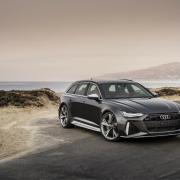First Drive: The Porsche 911 Carrera GTS
What is it?
The Porsche 911 has always been about incremental changes. From one generation to another, the 911 has never strayed too far from its original stylings, with Porsche changing its central icon in small brush strokes to ensure a common thread between each model. It’s certainly not one to rip up the rulebook, that’s for sure.
But this latest-generation 911 – dubbed 992.2 in Porsche-speak – introduces quite a big step-change with hybrid technology being integrated into the 911 for the first time. It’s only being applied to this GTS model, for now at least, but could be the start of a very electrified future for the 911.
What’s new?
From the outside at least, you’d be hard-pressed to tell this new GTS apart from the old one. Some key signifiers include the active aerodynamics package which includes adjustable front diffusers that can adjust to aid cooling or close up to help make the 911 as slippery through the air as possible. Fortunately, they’ll close when it’s raining to stop water and grit from flying through the car’s underside.
Inside, there’s a similar theme to before, albeit with some more technology to chat about. The pleasant blend of analogue and digital dials of the older 911 have been ditched, replaced instead by a full-size screen that you’ll find in cars like the Taycan. Porsche says that it’s made it easier to see key information and while that is the case, it seems a shame that the 911 has lost one of its last pieces of old-school equipment in favour of yet another display.
What’s under the bonnet?
It’s within the mechanicals of this new 911 GTS where things get interesting. At the heart of the GTS sits a turbocharged 3.6-litre ‘Boxer’ engine which feels tried-and-tested Porsche. But whereas a lot of hybrids have an electric motor assisting the engine directly, the 911 has a series of electrified components, including an electric-assisted turbocharger for quicker boost response and a small electric motor housed within the eight-speed dual-clutch automatic gearbox. A teeny-tiny battery is fixed within the nose of the car and, thankfully, doesn’t impact luggage space.
The end result? Well, with 534bhp it’s now 54bhp more powerful than the older GTS while being just 50kg heavier. However, this hybridisation isn’t really focused on efficiency overall – this 911 will still only return up to 22mpg in the best conditions – but instead has been introduced to help boost driver involvement and make this turbocharged car even more responsive than previous iterations of the 911. It can’t drive on electric-only power for any real distance – unlike ‘full’ hybrid cars – but uses battery charge to help increase performance and drive some auxiliary functions, like the air conditioning.
What’s it like to drive?
Right from the start the typical points we expect to be nailed in a Porsche 911 are, well, just that. The steering has some lovely weight to it and the thin-rimmed wheel makes interacting with the car a joy. The brakes are pleasant to use too and there’s that inherent agility present which helps to make the GTS keen through the corners. Refinement is decent, too, and even in the cabriolet version we tested there was very little noise with the roof in place.
How does the engine get on, though? It’s an impressive thing, that’s for sure. Acceleration is near-brutal in fashion and accompanied by all manner of whistles and whooshes from the turbo which feels primed at any moment to help crank that Boxer engine up a gear. The gearshifts, in particular, are impressive and deal out each cog with lightning-fast response.
What’s it like inside?
The 911 has always had a cabin focused around the driver and it’s no different here. The seats are low down and sculpted, while the steering wheel has plenty of adjustment to offer so you can get comfortable in no time.
As with other 911 models, the rear seats – which are removed as standard, but can be returned as a no-cost option – can only be used by children. If you’re pushed for space after the 132-litre boot has been filled, these rear seats provide a decent area of extra storage room. It’s not a truly practical car, but it’s far better than you might expect for a sports car like this.
What’s the spec like?
Priced from £135,834 – or £142,600 for the Cabriolet – the 911 GTS sure isn’t cheap. However, as with most Porsche models, what you’re accessing with that price is a lot of mechanical know-how which – in this car particularly – feels very cutting-edge.
There will still be a more entry-level Carrera model – which uses a more conventional turbocharged petrol engine without any form of hybridisation – and comes in at just under £100,000 but still offers excellent levels of involvement.
Final say
This car feels like Porsche’s way of getting us used to the idea of a hybrid 911. It, in typical Porsche fashion, doesn’t dive in with both feet but has instead used hybridisation to enhance the 911 experience rather than overpower it completely.
It’s all executed remarkably well without losing the hallmark 911 characteristics. Though the standard Carrera is still a fine car – and a very easy one to recommend at that – this GTS version shows that an electrified future for the 911 is an exciting one indeed.
Tech & Spech
Model as tested: Porsche 911 GTS
Price: £135,834
Engine: 3.6-litre turbocharged flat-six
Power: 534 bhp
Torque: 610Nm
Max speed: 194mph
0-60mph: 2.8 seconds
MPG: 21/22.4mpg
Emissions: 251-239g/km





























